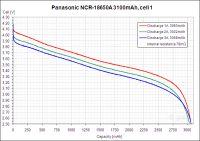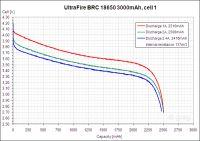Hello
I have a 18650 battery capacity meter with adjustable discharge current, in the range of 0.3-5A. I would like to know what is the optimal discharge current for low-current batteries (e.g. from laptop batteries) and high-current ones (with short-circuit current> 30A). Differences in the results of some pieces at 0.5A and 1.5A are quite significant (up to 500mAh), hence my zagwozdka.
Greetings,
Mariusz
I have a 18650 battery capacity meter with adjustable discharge current, in the range of 0.3-5A. I would like to know what is the optimal discharge current for low-current batteries (e.g. from laptop batteries) and high-current ones (with short-circuit current> 30A). Differences in the results of some pieces at 0.5A and 1.5A are quite significant (up to 500mAh), hence my zagwozdka.
Greetings,
Mariusz




